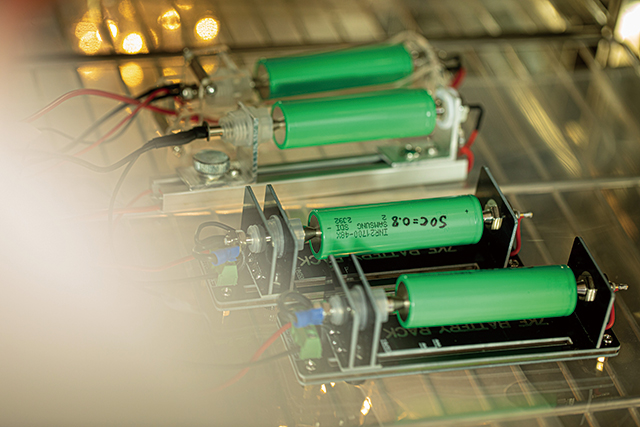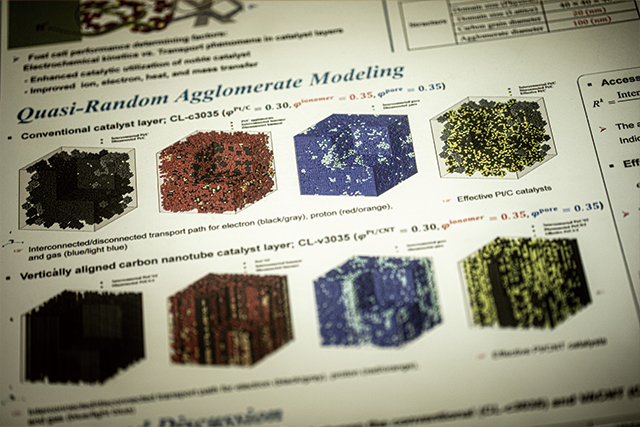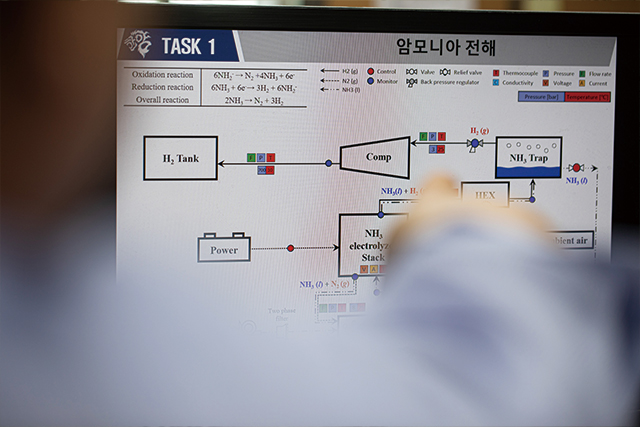Contents VOL. 258

COVER STORY
<HYPER> 여름호는 자율주행 차와 친환경차로 대변되는 이동 수단의 혁명, 모빌리티의 미래를 테마로 다뤘습니다. 이번호 기사를 통해 생각해보세요. 빠르게 발전하는 첨단과학 기술들, 그 변화의 흐름을 따르기만 하면 우리는 과연 멋진 신세 계에 도달할 수 있을까요?

<HYPER> 여름호는 자율주행 차와 친환경차로 대변되는 이동 수단의 혁명, 모빌리티의 미래를 테마로 다뤘습니다. 이번호 기사를 통해 생각해보세요. 빠르게 발전하는 첨단과학 기술들, 그 변화의 흐름을 따르기만 하면 우리는 과연 멋진 신세 계에 도달할 수 있을까요?
Scroll Down
On December 12th, 2015, 195 countries around the world agreed to the Paris Convention to reduce greenhouse gas emissions, and finally began to operate on a crisis-stricken earth. Currently, 6 years later, the automobile industry is quickly turning into an eco-friendly one. Nowadays, eco-friendly cars that utilize various power sources are competing with each other. In the near future, only 100% pollution-free cars may be allowed to travel on the road.

기계공학부 엄석기 교수
Professor Eom Seok-ki, Department of Mechanical Engineering
알고 있는가. 처음 등장했을 때만 해도 자동차는 청정의 아이콘이었다는 것을. 당시에는 마차를 끄는 말들의 배설물이 환경과 사람의 건강을 위협하는 골칫거리였기 때문이다. 실제 말똥은 이산화탄소보다 온실가스 효과가 25배나 높은 메탄을 배출한다. 하지만 그렇게 100년도 되지 않아 자동차는 지구온난화를 일으키는 온실가스 배출의 주범이라는 불명예를 넘겨받고 말았다.
임계치에 이른 환경문제를 더 이상 간과할 수 없기에 자동차 업계도 자동차의 심장이라 할 수 있는 엔진을 교체하는 초강수를 두게 됐다. GM의 메리 베라(Mary Barra) 회장은 세계 최대 IT 전시회인 ‘CES 2021’의 기조연설에서 “가솔린과 디젤차에 의존했던 전 세계가 완전 전동화로 전환될 것”이라고 전망했다. 벤츠, 폭스바겐, 볼보, 도요타, 현대차 등도 잇달아 내연기관차 생산 중단 또는 전기차나 하이브리드차로의 전환 계획을 발표했다. 한양대학교 기계공학부 엄석기 교수는 코로나19로 이동이 줄어 자동차 수요가 감소한 지금이야말로 친환경차로 선회할 수 있는 절호의 기회라고 강조했다.
“우리는 이제 자동차 없이는 살 수 없습니다. 문명사회에서 인류가 계속 자동차의 편리함을 누리려면 자동차의 문제점을 개선하는 수밖에 없죠. 특히 코로나19는 변화와 전환을 주저하던 자동차 업계에 친환경차로 사업을 재편할 수 있는 계기를 제공했습니다.”
친환경차는 CO₂ 나 NOx 같은 공해물질을 배출하지 않아 환경오염을 야기하지 않는 차를 말한다. 전기차는 배터리에 축적된 전기로 모터를 회전시켜 움직이고, 수소차(수소전기차)는 연료전지(수소와 공기 중의 산소를 반응시켰을 때 발생하는 전기)를 동력원으로 삼기 때문에 배기가스를 배출하지 않는다. 사실 전기차는 1800년 후반 가솔린 자동차보다 먼저 제작됐었다. 하지만 무거운 배터리 중량과 긴 충전 시간 때문에 실용화되지 못하다가 1996년 GM에서 양산 전기차 1호를 시판하며 부활했다.
한편, 수소차는 1966년 GM이 세계 최초의 수소차를 선보임으로써 등장했는데 이때만 해도 연료전지 시스템이 많은 공간을 차지해 6인승 밴에 2명밖에 타지 못했다. 그러다 1996년 다임러-벤츠(Daimler-Benz)가 연료전지 시스템의 부피를 획기적으로 줄였다. 국내에서는 2000년 현대차가 처음으로 수소차를 개발했고, 2013년 세계 최초로 양산 수소차를 출시하는 데 성공했다.
Did you know? Cars were a clean icon when they first appeared. This is because at the time, cart horse excrement threatened the environment and human health. In fact, horse excrement emits methane, which has 25 times more greenhouse effects than carbon dioxide. However, in less than 100 years, automobiles have inherited the disgrace of being the main culprit of greenhouse gas emissions that cause global warming.
As environmental problems have reached their limits and can no longer be overlooked, the automobile industry is actively replacing their engines -- the heart of automobiles. Mary Barra, the chairman of GM, said in a keynote speech at CES 2021, the world’s largest electronics exhibition, “The world, which used to rely on gasoline and diesel cars, will become fully electrified.” Mercedes-Benz, Volkswagen, Volvo, Toyota, and Hyundai Motor have also announced plans to discontinue production of internal combustion engines or convert them into electric and hybrid cars. Eom Seok-ki, a professor from the Department of Mechanical Engineering at Hanyang University, stressed that now is the time to change to eco-friendly cars as the number of moving cars and the demand for cars have decreased due to COVID-19.
“We can no longer live without cars. In order for humanity to continue enjoying the convenience of automobiles in a civilized society, we must solve the problems of automobiles. In particular, COVID-19 provided an opportunity for the automobile industry to reorganize their business to an eco-friendly car.”
Eco-friendly cars do not cause environmental pollution since they do not emit pollutants such as CO₂ or NOx. Electric cars and hydrogen cars do not produce exhaust as electric cars use electricity stored in batteries to rotate motors, while hydrogen cars (hydrogen-electric cars) use fuel cells (electricity generated by hydrogen reacting with oxygen in the air) as a source of power. In fact, electric cars were manufactured before gasoline cars in the late 1800s. However, due to the heavy weight of battery and long charging time, actual production did not occur until GM launched its first massproduced electric car in 1996.
The world’s first hydrogen car was introduced by GM in 1966, but only 2 people were allowed though it was a 6-seat van since the fuel cell system occupied a lot of space. In 1996, Daimler-Benz drastically reduced the volume of the fuel cell system. Hyundai Motor Company developed hydrogen cars for the first time in 2000 and succeeded in launching the world’s first hydrogen car in 2013.
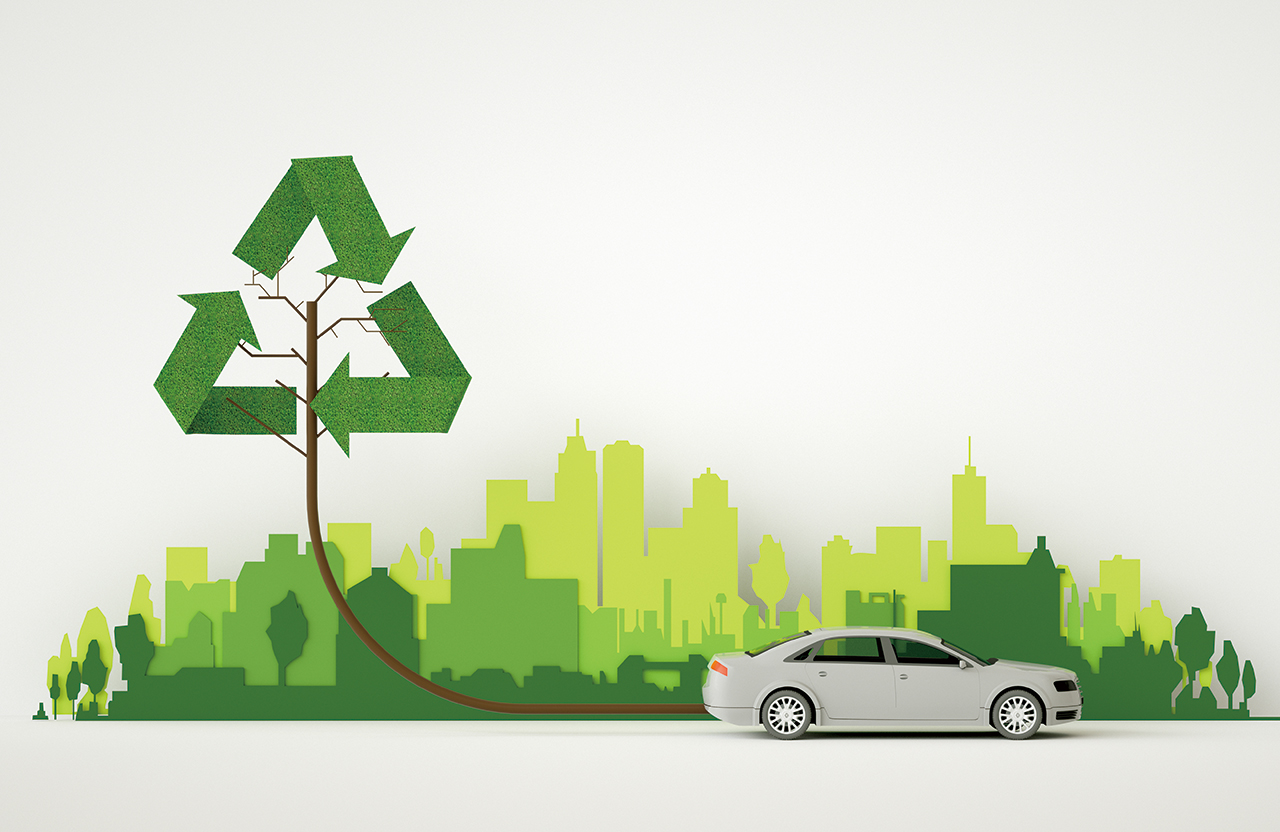
현재는 수소차, 전기차, 천연가스차, 하이브리드차 등 다양한 동력의 차들이 친환경차로 분류되고 있다. 시대마다 달라지는 CO₂ 규제 기준에 따라 친환경차의 개념도 순차적으로 탄소를 줄이는 방향으로 좁혀지는 중이다. 대표적인 예로 현재는 내연기관과 배터리가 결합된 하이브리드차도 친환경차로 간주하지만, 머지않아 엄밀한 의미의 친환경차 범주에서는 밀려나게 될 것이다.
“탄소 규제를 강화해야 하지만 기존의 산업구조를 한 번에 바꿀 수는 없습니다. 그래서 국가나 자동차 업체별로 자신들에게 맞게 탄소 감소 방법을 모색하고 있지요. 앞으로는 궁극적으로 탄소 배출을 완벽하게 없앤 무공해차만이 친환경차로 인정될 것입니다.”
전기차, 수소차, 천연가스차 등 이제 막 동시다발적으로 시장에 출격하기 시작한 친환경 자동차들은 아직은 제각각 이런저런 장점과 한계점들을 동시에 안고 있다. 그렇기에 이를 해결하려는 연구들이 활발히 진행되고 있다. 예를 들어 LNG차는 탄소 배출이 적은 천연가스를 사용하지만, 아직은 출력이 약해 이를 높이는 연구들이 추진 중이다. 미세먼지 배출이 높아 퇴출 위기에 처한 디젤차도 열효율이 높다는 장점이 뚜렷해, 탄소 배출을 낮춘 클린디젤 개발이 계속해서 이뤄지는 상황이다.
전기차는 에너지 밀도를 높이는 것이 관건이다. 모터 구동 자동차는 출력과 전압이 높지만 한 번 충전했을 때 주행거리가 짧은 것이 최대 단점이기 때문이다. 양극재 내 니켈 비중이 높아질수록 배터리 에너지 밀도가 향상돼 전기차의 주행거리가 증가하는데, 동시에 열에 의한 폭발 위험도 커진다. 따라서 니켈 함량을 높이기 위해서는 고도의 기술력이 요구된다. 또한 현재 주로 사용되는 리튬이온 배터리는 열, 압력, 충격에 약해 폭발 위험이 있으므로 전고체 배터리에 관한 연구도 활발히 진행되고 있다.
“수소차는 기술적으로 높은 수준에 이르렀으나 가격이 비싸다는 것이 단점입니다. 그래서 저비용 소재 개발 연구가 다양하게 이뤄지고 있어요. 대표적인 촉매제로 사용되는 백금을 대신할 촉매제 연구에 업계의 관심이 높습니다. 더불어 소비자를 만족시킬 수 있도록 내구성을 강화하고, 자동차 수명이 다했을 때 자동차에 사용된 소재들을 재활용하는 문제도 중요한 연구 과제로 부상하고 있습니다.”
Currently, hydrogen cars, electric cars, natural gas cars, and hybrid cars are considered eco-friendly cars. According to CO₂ regulations, the concept of eco-friendly cars has been narrowed down to reducing carbon sequentially. As a representative example, hybrid cars combined with internal combustion engines and batteries are now considered eco-friendly cars, but they will be excluded from the strict eco-friendly car category in the near future.
“We have to strengthen carbon regulations, but we can’t change the initial industrial structure at once. Therefore, countries and automakers are looking for suitable ways to reduce carbon emissions. From now on, only pollution-free cars that completely eliminate carbon emissions will be recognized as eco-friendly cars.”
Eco-friendly cars, like electric cars, hydrogen cars, and natural gas cars, that have entered the market have both advantages and limitations. Therefore, research to solve this problem is being actively conducted. For instance, LNG cars use natural gas with low carbon emissions, but their output is still weak. Hence, research is being conducted to increase the output. Diesel cars, which are in danger of being expelled due to high emissions of fine dust, have a strong advantage of high thermal efficiency. So the development for clean diesel cars to lower carbon emissions has continued.
Increasing the energy density is the key to electric cars. This is because motordriven cars have high output and voltage, but the biggest disadvantage is that they have a short mileage once they are charged. The higher the proportion of nickel in the anode material, the greater the distance traveled by electric vehicles since the density of battery energy improves, and the risk of heat explosion also increases at the same time. Therefore, high technical skills are required to increase nickel content. In addition, lithium-ion batteries, which are mainly used today, are vulnerable to heat, pressure, and shock, so research on all solid-state batteries is also being conducted.
“Hydrogen cars have reached a high technical level, but the disadvantage is that they are expensive. Therefore, low-cost material development research is being carried out in various ways. The research industry is interested in replacing platinum, a typical catalyst. Another important research issue is to strengthen durability to satisfy consumers and recycle materials used in automobiles when they reach their lifespan.”
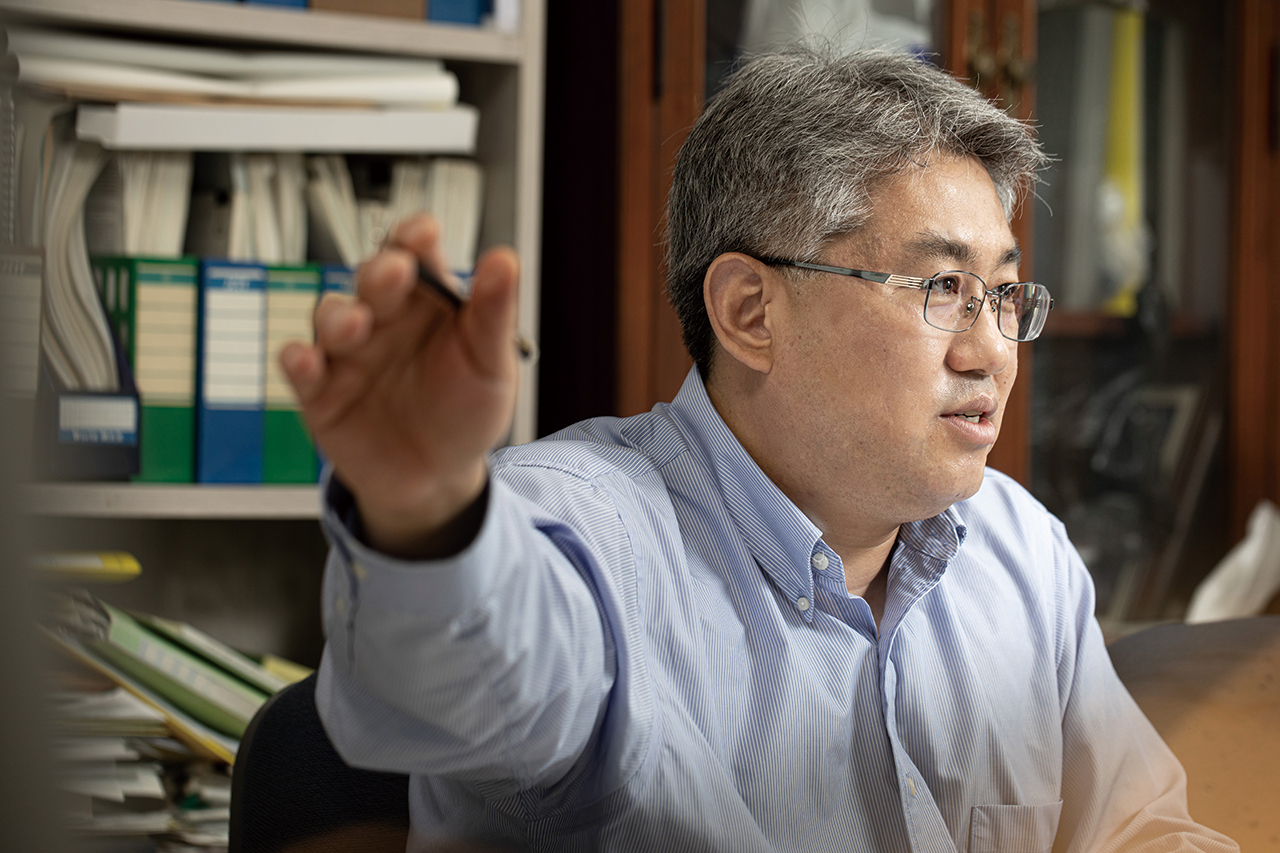
엄석기 교수는 친환경차에 대한 국내 기술력은 세계 어디에 내놓아도 뒤지지 않을 독보적인 수준이라고 강조했다.
“자동차에서 가장 중요한 부품은 엔진입니다. 전기차의 엔진은 배터리, 수소차의 엔진은 연료전지인데, 잘 알려져 있다시피 국내 업체들이 글로벌 배터리 시장을 선도하고 있습니다. 또한 자동차용 연료전지를 자체 생산하는 기업은 전 세계에서 일본의 도요타와 혼다, 우리나라의 현대차 단 3개 업체뿐입니다.”
그렇다면 현재 각축전을 벌이고 있는 다양한 동력의 친환경차들 중 어떤 것이 시장의 주도권을 쥐게 될까. 이는 관련 인프라 구축과 밀접한 관련이 있다. 전기차는 이미 생활 속에 구축된 인프라를 이용해 충전기를 보급하면 되지만, 수소차는 수소충전소를 새로 설치해야 하는 과제가 있다. 이 때문에 범위를 승용차에서 버스, 트럭, 기차, 드론 등 다양한 모빌리티로 확대해 수소충전소의 경제성을 높이려는 움직임이 일고 있다.
“이분법적으로 생각할 필요는 없습니다. 전기차와 수소차는 보완적 관계를 이룰 수 있습니다. 도심 주행에 적합한 전기차는 승용차 중심으로, 장거리 운행에 최적인 수소차는 화물트럭이나 철도, 대중교통 등에 적용하기 좋으니 용도에 맞게 선택적으로 발전시킬 수 있습니다.”
인류가 발명한 최고의 이기이지만 각종 환경문제로 눈총을 받아왔던 자동차. 다시 한번 청정의 아이콘으로 재탄생하기 위해 자동차는 지금 환골탈태를 감행하고 있다.
Professor Eom Seok-ki stressed that Korea’s technological capabilities in eco-friendly cars are as unique as anywhere else in the world.
“The most important part of an automobile is the engine. Electric car engines are batteries and hydrogen car engines are fuel cells, but as is well known, Korean companies are leading the global battery market. Only 3 companies, Japan’s Toyota, Honda and South Korea’s Hyundai Motor Company manufacture automobile fuel cells worldwide.”
Which of the various eco-friendly cars currently competing will dominate the market? This is closely related to the construction of related infrastructure. Electric cars can be supplied using the infrastructure that has been built in their lives to popularize chargers, but hydrogen cars need to set up new hydrogen charging stations. As a result, there are moves to expand the range from cars to buses, trucks, trains, and drones to improve the economy of hydrogen charging stations.
“You don’t have to think dichotomously. Electric and hydrogen cars can form a complementary relationship. Electric cars suitable for urban driving are mainly passenger cars, and hydrogen cars suitable for long-distance driving are suitable for trucks, railways and public transportation, so they can be developed selectively according to their applications.”
Although the car was humanity’s best invention, it has also been criticized for various environmental problems. In order to be reborn as a clean icon, automobiles are now trying to transform themselves.
